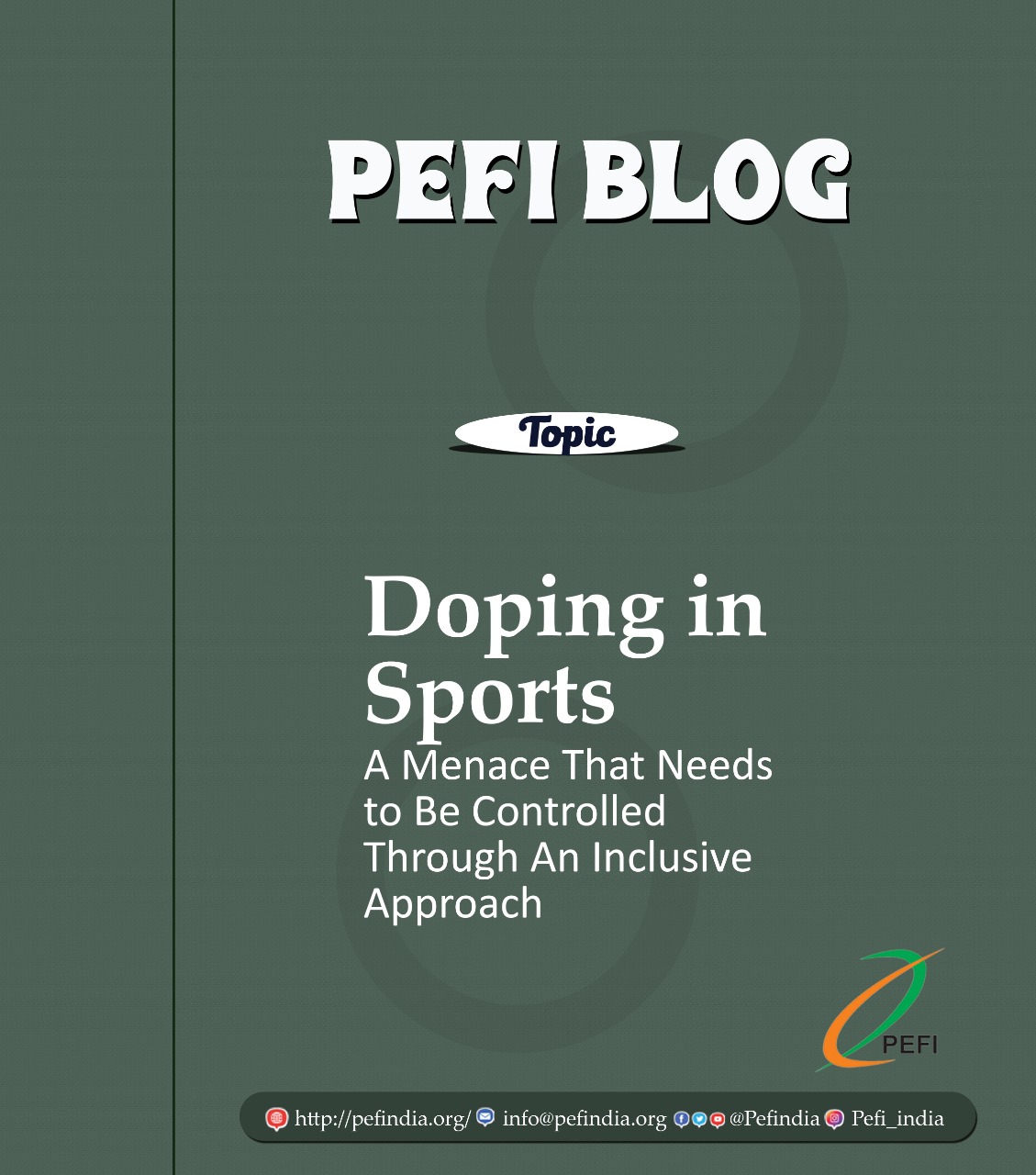Call Anytime +91-9212799477

Doping in Sports: A Menace That Needs to Be Controlled Through an Inclusive Approach
Doping in sports and otherwise is a global menace that has been troubling authorities for decades. Doping in sports is more worrisome since it doesn’t only finish the career of the indulging sportsperson but it also affects the reputation of the concerned sport as well. An athlete who dopes takes performance-enhancing drugs to improve performance by transferring more oxygen to muscles. Almost every sport and athlete is affected by doping. The main purpose of doping is to enhance strength and endurance in the body or to eliminate fatigue. Therefore, rightly so, the practice is considered wrong ethically and morally.
The recorded pieces of evidence of athletes using performance-enhancing drugs started coming as early as 1920, there have been many efforts to control the worldwide menace since then, but the decisive and effective step was taken in 1999, In this year, the World Anti-Doping Agency (WADA) was founded as an initiative led by the International Olympic Committee to organize, coordinate, and monitor the battle against doping in all its forms. Although even after the acceptance of the global code of conduct for doping by the major sports administration bodies globally, professional sport still remains infected with the menace of doping. There is no sport that is not affected by this problem, but sports like weightlifting, boxing, bodybuilding etc are hugely plagued by doping.
Same as the whole world India has its own share of troubles when it comes to doping. There have been a number of such incidences in India as well across the spectrum of professional sports where athletes were found to have taken performance-enhancing drugs in order to perform well in the competition. One aspect of this issue is quite interesting, We can understand that at the Junior level there is not much awareness in terms of doping although nowadays at a professional level there is enough guidance. Despite all the guidance and awareness, the situation is still alarming and athletes are still being caught doping on a regular basis. Obviously, there is one simple reason that playing sports at a professional level requires a high degree of physical and mental fortitude. There is so much money involved in professional sports these days that athletes tend to forget that there is a blurred line between right and wrong in order to achieve success. The pressure to win pushes them to use unfair methods in order to win. Usually, athletes end up crossing that line knowingly, but there are rare instances also when they do it unknowingly.
After signing the Copenhagen Declaration in 2004, India has been a member of the World Anti-Doping Agency since 2004 and has established a National Anti-Doping Agency popularly known as NADA to promote fair play throughout the nation. There is no doubt that NADA has made enormous efforts to control this menace, but certainly, there is more to be done, especially in the case of India. If we look at the doping incidences in India closely, we will find issues that due to lack of knowledge or on the prescription of doctor athlete consumed something which consisted of some prohibited substance. Since NADA follows WADA’s guidelines which are mostly circulated in English, it has also been a hindrance in executing anti-doping campaigns on the ground. In a vast and diverse country such as India where most of its professional athletes come from a rural background, it is important that the anti-doping campaigns should adopt a more inclusive approach. Firstly, the language barrier should be dropped and Physical Education teachers, coaches, fitness trainers should be educated about doping in their native language. It would create a better and inclusive anti-doping ecosystem where teachers, coaches and trainers would be empowered to contribute to anti-doping awareness campaigns more effectively. It is important that Physical Education teachers are provided with diploma courses, certification workshops etc related to anti-doping in order to educate our students at a young age. It is a fact that National Agencies can’t reach every corner of the country, therefore it is also important that other organizations working in sports should also be included in anti-doping campaigns in order to achieve widespread awareness.
It can be said that despite all the good work NADA has been mostly focused on catching the defaulters and prosecuting them. The approach may look right on papers but statistics say otherwise. If we study the proceedings of tribunals of such cases, we will find out that in India awareness and lack of doping education has been the main factors. There have been some incidences where athletes have been doping since junior levels, this mostly happened because their teachers and coaches at that level were not aware enough of the consequences or simply ignored them in order to achieve their short term goals of getting maximum medals for their respective institutions. This can be encountered only through strategically designed and inclusive anti-doping campaigns which can overcome the barriers of language, demography and geography. Anyone who is remotely related to sports would agree on the fact that allegations of doping don’t only affect the athlete in question but it brings shame to the whole sports fraternity and the country. Therefore, comprehensive doping education across the whole spectrum includes teachers, parents, coaches, administrators and athletes as well, is the need of the hour.
The Physical Education Foundation of India (PEFI) has been continuously working towards anti-doping in the country in its capacity, along with NADA and other agencies. It is our primary organizational objective to ensure fair participation and implementation of an ethical code of conduct in sports.
Compiled By:
Dr. Piyush Jain
National Secretary
Team #PEFI
Privacy Policy | Terms & Conditions | Refund Policy
© Copyright 2024 by PEFINDIA.org | Designed & Developed By CraftyWebbies

